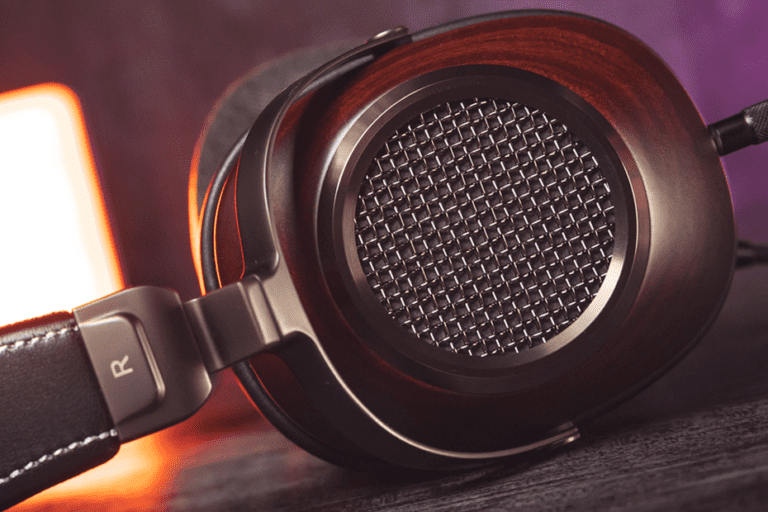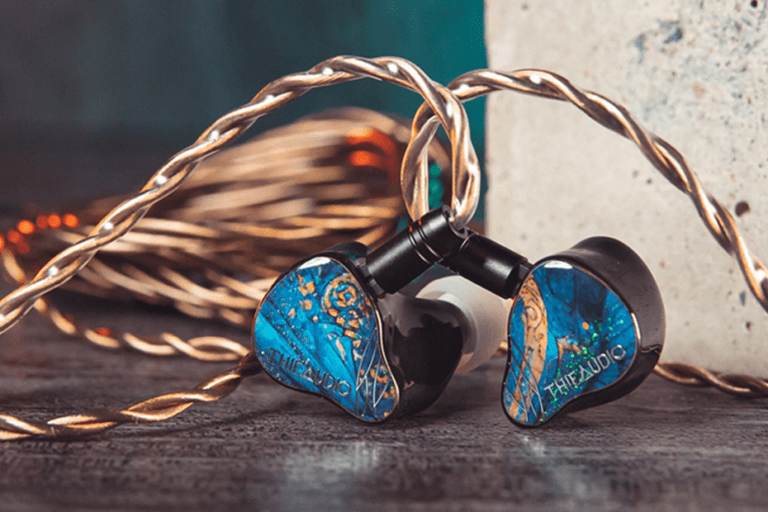Greetings, I’m Alexander, and today we’re diving into the world of audio with the Truthear Hexa, a hybrid in-ear monitor (IEM).
Truthear, a newcomer to the world of IEMs, was established in 2022. Their debut offering, the Truthear Zero, garnered positive reviews, with a collaboration with headphone reviewer Crinacle. If you’re curious, you can find my review of the Zero on this channel. Now, we’re shifting our focus to the Truthear Hexa, companie’s second product. Priced at $79.99 USD, this hybrid IEM features one 10mm dynamic driver and three Balanced Armatures.
Disclaimer: I would like to thank Shenzhen Audio for providing a sample for this review. I am not paid to make this review or offer any specific opinions about this product, and all thoughts expressed in this review are my own.
The Truthear Hexa arrived in a medium-sized carton box with an w illustration on the sleeve’s front and detailed technical specifications on the back. Inside the sleeve, you’ll discover a sleek black box bearing the HEXA insignia.
In the box
- Truthear Hexa IEMs
- Detachable cable
- 3 pairs of wide-bore silicone ear tips (S, M, L)
- 3 pairs of narrow-bore silicone ear tips (S, M, L)
- 2 pairs of foam ear tips
- Soft pleather carrying case
- User manual
- Warranty card
For an IEM priced under $100, this package is quite generous. The impedance of Truthear Hexa is 20.5 Ohms, and the sensitivity is 120 db/Vrms.
Design and build
Truthear Hexa’s shells boast an unconventional triangular design that fits snugly in your ears. The shells consist of two parts, with the faceplate crafted from CNC-machined aluminum alloy and the remaining shell from medical-grade resin. The faceplates are adorned with the Truthear logo and feature a sleek matte black finish, while the shells themselves are a translucent dark gray, offering a glimpse of the internal driver configuration under strong light.
The low frequencies of Hexa are powered by a 10mm dynamic driver, while three custom BAs handle the midrange and treble. Each shell is clearly marked with ‘L’ and ‘R’ indicators. The nozzles are short but compensated by the unique shell shape, allowing for above-average insertion depth.
Each nozzle features three holes, with two of them protected by mesh. The shells also incorporate vents near the connectors and use a convenient 2-pin connector design. Truthear includes six sets of silicone ear tips to ensure a comfortable fit.
The only thing missing here, is a small lip at the end of the nozzle that usually helps with ear tips retainment
Fit & comfort
Despite their distinctive shape, the Truthear Hexa shells are lightweight and fit comfortably in the ears. Truthear intentionally designed the shells for maximum compression, resulting in a lighter weight and improved comfort. This design philosophy pays off, as finding a perfect fit with the provided ear tips is a breeze.
Long listening sessions are a pleasure, thanks to the outstanding comfort and ergonomics. Additionally, these IEMs offer good sound isolation, making them suitable for both outdoor use and on-stage monitoring.
Cable
The Truthear Hexa cable measures 1.2 meters and features a 4-core silver-plated design with a Y-splitter and a metal chin slider. One end sports an angled 3.5 mm connector, while the other end incorporates two 0.78 mm 2-pin connectors, each clearly marked ‘L’ and ‘R’.
The cable is on the thinner side and prone to tangling, with some microphonics. Upgrading to a higher-quality cable can enhance the fit and overall comfort.
Truthear Hexa sound overview
Please note that all the sound impressions I’m sharing in my reviews are completely subjective, so please take them with a grain of salt.
All tests were conducted using the stock narrow-bore ear tips. The narrow-bore stock ear tips slightly boost the low frequencies, while the wide-bore ear tips increase the upper midrange energy and provide additional air in the treble.
Despite having a low impedance and high sensitivity, the IEMs love power. Weak sources can power them, but the IEMs can scale with more powerful sources, improving the dynamics and overall presentation.
Still I had no issues driving this set from my Samsung Galaxy S10 that was able to bring this pair to my comfort levels of volume, but I had almost no headroom left. Pairing it with even a small DAC dongle significantly increased the headroom. The Truthear Hexa sound signature is rather unique in its price range, diverging from the typical V-shape or Harman curve found in most IEMs.
Bass
The sub-bass extends impressively and carries a satisfying amount of rumble and authority. It’s not entirely neutral, featuring a subtle boost that adds depth and engagement to bass-heavy tracks. However, the mid-bass lacks some weight and doesn’t hit as hard as some might prefer.
Despite this, the bass maintains good detail and texture, with its speed and dynamics preventing muddiness during complex musical passages.
Midrange
Thanks to the absence of bass bleed, the midrange is crystal clear, transparent, and exceptionally detailed. Lower mids exhibit lovely detail and weight, delivering a natural yet laid-back tonality. Upper mids, on the other hand, are more forward and energetic without veering into harsh or sibilant territory.
Instrument and vocal layering is impressive, with natural timbre and precise positioning in the mix. While male vocals occasionally lack some note weight, the midrange remains well-defined, maintaining a natural and organic character without the metallic accents often associated with some BA configurations.
Treble
The treble in the Truthear Hexa extends beautifully, offering an energetic yet smooth and fatigue-free experience. It provides a welcome dose of air and sparkle without excessive emphasis, contributing to overall clarity. Remarkably, the treble’s tuning complements the IEM’s tonality, making long listening sessions a comfortable pleasure.
Found this review useful? Read more IEM reviews here
Sound Stage, imaging, details
The HEXA’s soundstage, both in width and depth, is average but more than adequate for an enjoyable listening experience. Instrument separation is a strong point, particularly appealing to those seeking an affordable IEM for professional work or on-stage monitoring.
Resolution, detail retrieval, and clarity are commendable, ensuring that every nuance in the music shines through. The HEXA’s imaging is precise, allowing easy localization of instruments within the soundstage.
Pros
- Neutral tuning with a sub-bass boost
- Dynamic and engaging sound
- Remarkable coherency
- Exceptional imaging and instrument separation
- Organic timbre
- Comfortable fit
- Effective passive sound isolation
- Generous accessory package
Cons
- Mid-bass lacks impact, potentially disappointing for some
- Stock cable could be better
- Benefits from a powerful source; weaker sources may compromise dynamics and presentation
Conclusions
While the Truthear Hexa isn’t without its imperfections, its strengths easily overshadow its weaknesses. This IEM stands out among the sub $100 competition with its remarkable coherency and predominantly neutral sound signature, making it ideal for extended listening sessions. It offers good isolation, exceptional comfort, and, perhaps most importantly, outstanding technical performance.
In my opinion, the Truthear Hexa ranks among the best hybrid IEMs under $100 on the market today, making it a compelling choice for both professional work and music listening enjoyment.
I hope this review has been helpful and if you’d like to see more content like this, consider subscribing to my YouTube channel for future updates. Thank you for reading, and happy listening!
** As an Amazon Associate I earn from qualifying purchases. Some of the links in my reviews are affiliate links, which means at no extra cost to you, I will make a small commission if you click them and make a qualifying purchase.



[…] TRUTHEAR Hexa […]